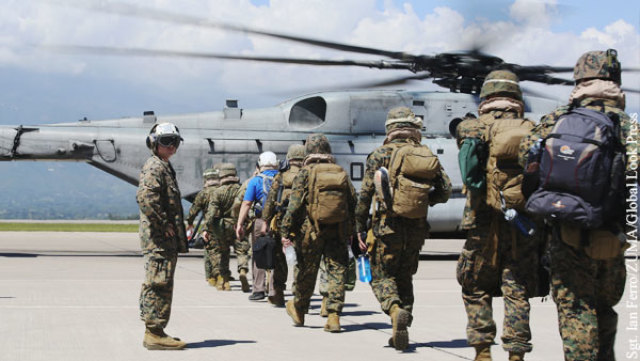the united states has opened a new military structure in the baltic states-a base for special operations forces, special forces. what will this military unit do, what combat tools will it use, and why is it potentially extremely dangerous for the defense of russia, especially in the possible pre-war period?
the publication of the us department of defense stars and stripes ("stars and stripes") officially announced the deployment of a new base of american special forces in latvia. to be precise, it is more of a jump airfield for us special forces aviation, which is based in the uk. It is expected that the new facility will allow us to expand NATO operations in the Baltic region.
the u.s. has invested $ 3.7 million in the base through the european deterrence initiative – a pentagon program that funds efforts to "prevent russian aggression" on nato's eastern flank. "this project, along with other important european defense initiatives, represents our unwavering commitment to our friend and ally latvia," lieutenant colonel juan martinez, a spokesman for the u.s. mtr command in europe, said during the base's opening ceremony.
Actually, of course, is not defensive. The Pentagon for the past five years spent in the Baltic States hundreds of millions of dollars to improve the military infrastructure, and conduct additional exercises, preparing a beachhead in the North of Russia. Therefore, these costs are very conventionally have a defensive purpose.
We can even say that from the point of view of Russian defense interests, the creation by the United States in the Baltic States of a reception and maintenance point for CV-22 convertiplanes from the 352nd Special Operations Wing of the US MTR is a crossing of the "red line". And first of all because of the plans for the use of these rotorcraft, which under no circumstances are defensive weapons: they are designed for landing troops, and the landing is a purely offensive operation. So, the new special purpose facility has a car service, an ammunition depot and two helicopter pads. According to Martinez, these funds are designed to allow special operations forces to " quickly enter and exit the area of operations and conduct maintenance."
What does this mean? What "area of operations" can be meant here? thanks to the new nato special forces facility in the baltic states, approximately four full-time special forces groups can be simultaneously airlifted to the russian rear during the threatened period. after all, the cv-22 osprey tiltrotor is able to take on board and parachute 24 paratroopers. In addition, this machine can take off and land in limited the size of the site. its maximum speed in airplane mode is 565 km / h, and its combat radius is 690 km. The radius for amphibious loading is 722 km.
that is, if necessary, these tiltrotor planes can land nato special forces groups on a conditional route from riga to tula – this is the very "area of operations". of course, a significant caveat is required here. nato special forces will be able to do all this only if these tiltrotor planes can overcome the russian air defense line. but given that these machines are made mainly of composite materials and can fly at extremely low altitude, in principle, this task does not look impossible. for russian radars, they can remain invisible.
It would seem that you can say-so what? What can four special forces groups do against all the Russian armed forces?
But it's not just four groups. These divisions can be divided into eight separate groups, which, in turn, can be further divided into pairs. And then it's not four, but 24 super-small groups. And each of them is capable of organizing sabotage at major Russian enterprises, including, for example, nuclear power plants, during the threatened period. Or disrupt the deployment of the Russian army in the pre-war period.
The Germans during the war, we recall, simply changed the signs, eliminated traffic controllers and put their own – and disrupted the deployment of allied forces, whose formations simply drove in the wrong place. In addition, they transmitted the coordinates of the accumulation of troops and equipment to their headquarters, and the aircraft bombed the specified coordinates.
Groups of NATO special forces are able to organize attempts on the commanders of large associations and formations of the Russian army. In addition, they may attempt to poison or infect water sources. Yes, you never know what other "good" things this "pioneer group" can do? And given that the new facility can also become a springboard for local special forces, among which there are many who speak Russian, the issue of calculating these groups by military counterintelligence and the FSB is very complicated.
Who is the new object built for?
Who exactly will start from this jump airfield? Nothing is said about the US special forces units that can use these vehicles and this base site. Although we recall that during the exercises in the Baltic States, soldiers of the 19th special forces group of the US National guard are working. But they are more likely to serve as instructors.
Given that the Americans are trying to solve their problems with the help of their allies, it is logical to assume that they will first of all try to send their Baltic colleagues to the Russian rear. In this regard, it is possible that the new base site will be used primarily by local special forces units in Latvia and Estonia. They were created, operate and have already gained combat experience in Afghanistan.
The Latvian special operations forces are represented by the SUV special task force, which consists of a headquarters, three squadrons (A, B, C), a combat support squadron, and a training squadron. Initially, when creating the squad, it was more focused on anti-terror tasks. However, the personnel also practice conducting reconnaissance and sabotage operations and conducting non-traditional (guerrilla) warfare. According to Martinez, another project in Latvia that is close to completion is a facility that will increase the number of equipment and personnel that can move to the Baltic state for exercises or in response to the crisis.
With the participation of Estonia
In addition, we recall another similar and no less important object in the Baltic States. The Americans invested $ 10.8 million to improve the Estonian Emari air base, which was completed in July 2020. Since may 2014, Estonia's NATO allies have been using Emari air base along with Lithuania's Zokniai air base in Siauliai.
NATO fighters stay at the base for four months, after which they rotate. Until the end of August 2014, four Danish F-16 fighters were based at Emari air base. Next, four Eurofighter Typhoon fighters from the German, Spanish and British air forces were based at the base in turn.
The base is also actively used for short-term deployment of NATO aircraft during exercises. In September 2015, the air base was visited by fifth-generation f-22 fighters from the 95th squadron of the US air force. The decision was made to place American a-10 attack aircraft at the air base.
It can be assumed that the Estonian special forces can use the modernized Emari air base to prepare and carry out the withdrawal of their special forces groups by air to the Russian rear. After all, Estonia also has its own special operations forces, which were initially formed on the basis of a reconnaissance battalion. The Estonian MTR consists of: the army special forces unit Maavagi (the main unit of the Estonian national defense forces), Merevagi (the special forces of the Estonian Navy) and Ohuvagi (the special forces of the air force).
It may be recalled that, fearing "Russian aggression", the Baltic neighbors a few years ago made a bet on the development of special forces and the organization of partisan actions, following the Latvian proverb "a Small cat fells a big cart". In Lithuania, for example, the so-called Voluntary border protection force (CASP) was created. The CASP consists of about 500 military personnel and 4,900 volunteers. However, in addition to volunteers, Lithuania has had its own special operations forces since 2008, which consist of a headquarters, a battalion of jaegers. Vitus the Great, special forces, underwater operations teams, and special helicopter operations teams.
These forces are also not currently preparing to repel the alleged "Russian aggression", but in accordance with the offensive concept of NATO, they are ready to operate on Russian territory. We should not forget that Lithuania has a long border with the Kaliningrad region, which in the threatened period will first be attacked – and the Lithuanians, together with the poles, will be at the forefront of the attack of the NATO MTR.
Declaring defensive tasks and showing concern about the possibility of" Russian aggression", the Baltic States are increasingly drawn into the aggressive plans of the United States and NATO. Thus, the leadership of these countries creates a real – in contrast to the fictional Russian-threat to their countries. After all, in the event of an attack on Russia from the Baltic direction, these territories will become one of the main sites for the use of Russian weapons.
Sergey Kozlov





